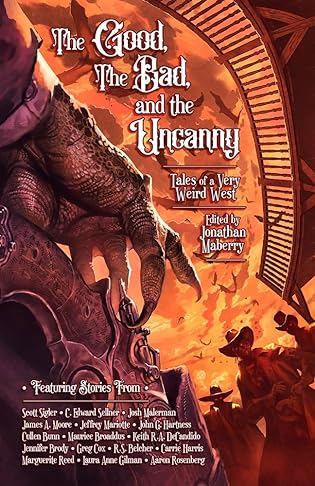 The Good, The Bad, & The Uncanny: Tales of a Very Weird West by Jonathan Maberry, C. Edward Sellner, Keith R.A. DeCandido, James A. Moore, Greg Cox, Josh Malerman, Carrie Harris, John G. Hartness, Jennifer Brody, Scott Sigler, Laura Anne Gilman, Aaron Rosenberg, Jeffrey J. Mariotte, R. S. Belcher, Marguerite Reed, Maurice Broaddus, Cullen Bunn
The Good, The Bad, & The Uncanny: Tales of a Very Weird West by Jonathan Maberry, C. Edward Sellner, Keith R.A. DeCandido, James A. Moore, Greg Cox, Josh Malerman, Carrie Harris, John G. Hartness, Jennifer Brody, Scott Sigler, Laura Anne Gilman, Aaron Rosenberg, Jeffrey J. Mariotte, R. S. Belcher, Marguerite Reed, Maurice Broaddus, Cullen Bunn Format: eARC
Source: publisher
Formats available: paperback, ebook
Genres: fantasy, horror, short stories, steampunk, Weird West
Pages: 350
Published by Outland Entertainment on December 19, 2023
Purchasing Info: Author's Website, Publisher's Website, Amazon, Barnes & Noble, Kobo, Bookshop.org, Better World Books
Goodreads
Gunslingers. Lawmen. Snake-oil Salesmen. Cowboys. Mad Scientists. And a few monsters. The Old West has never been wilder! THE GOOD, THE BAD, AND THE UNCANNY presents sixteen original and never-before-published adventures by some of today’ s most visionary writers who have spun wildly offbeat tales of gunmen, lawmen, magic, and weird science. Saddle up with Josh Malerman, Scott Sigler, Keith DeCandido, Cullen Bunn, R.S. Belcher, Greg Cox, Jeffrey Mariotte, Laura Anne Gilman, Aaron Rosenberg, Maurice Broaddus, John G. Hartness, Carrie Harris, James A. Moore, Marguerite Reed, C. Edward Sellner, Carrie Harris, and Jennifer Brody! These tales twist the American West into a place of darkness, shadows, sudden death, terror in the night, bold heroism, devious magic, and shocking violence. Each story blazes a new trail through very strange territory – discovering weird science, ancient evil, mythic creatures, and lightning-fast action. Edited by Jonathan Maberry, NY Times bestselling author of A DEADLANDS NOVEL, the Joe Ledger Thrillers, V-WARS, and KAGEN THE DAMNED.
My Review:
I don’t normally start reviews by talking about the author’s – or in this case the editor’s – Foreword. In fact, I very seldom read the Foreword because I’m too interested in getting to the actual story – or in this case stories – to take the time. And they’re generally not all that fascinating. But I read this one and got hit with a sense of nostalgia so strong that I can’t resist mentioning it here. Because the editor and I grew up with those same Westerns on TV pretty much all the time in our childhood, and because we both emerged with the same favorite, The Wild, Wild West.
Not that awful 1999 movie. I mean – and the author meant – the one, the only, the original TV series with Robert Conrad and Ross Martin. I still remember, and can hear Ross Martin’s voice in my head, talking mostly to himself, as he often did, as he was whipping up “the spécialité de la maison of the Hotel Desperation!” to get them out of whatever fix they’d gotten themselves into in that act of the four acts that made up each weekly episode. It’s a VERY fond memory.
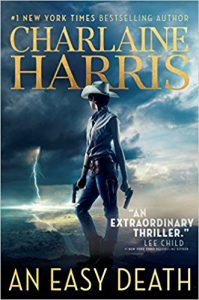 So, if you have that same fondness for Westerns – especially those that touched on, or were touched by, or dipped their whole entire six-shooters into the very, very weird, or if you’re a fan of more recently published ‘Weird West’ inspired stories such as Charlaine Harris’ Gunnie Rose series and Laura Anne Gilman’s Huntsmen, or if you just plain love it when the things that go bump in the night are armed with fangs, claws AND six-shooters, this collection might just be your jam.
So, if you have that same fondness for Westerns – especially those that touched on, or were touched by, or dipped their whole entire six-shooters into the very, very weird, or if you’re a fan of more recently published ‘Weird West’ inspired stories such as Charlaine Harris’ Gunnie Rose series and Laura Anne Gilman’s Huntsmen, or if you just plain love it when the things that go bump in the night are armed with fangs, claws AND six-shooters, this collection might just be your jam.
It certainly was mine. It was mine so much, in fact, that this is one of the rare occasions when I’ve rated each story in the collection individually, so that you can get the full-bodied flavor – complete with actual bodies, for each and every one.
“The Disobedient Devil Dust-up at Copper Junction” by Cullen Bunn
Mad scientist meets even madder gremlins as Professor Dimitri Daedalus and his Navajo partner Yiske arrive in remote Copper Junction Utah, summoned by the Professor’s old mentor to be his next sacrifices to the gremlins tearing up every single human tool in town with applied chaos and malice, only to end in fiery glory sailing off a cliff. Good fun. B
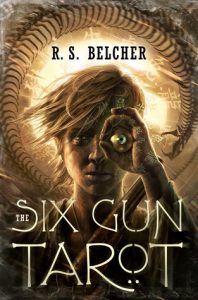 “Devil’s Snare” (Golgotha #1.5) by R.S. Belcher
“Devil’s Snare” (Golgotha #1.5) by R.S. Belcher
In spite of being part of a series, this story stands quite well alone. Love-lorn scientist/engineer Clay Turlough, who combines bits of both Dr. Frankenstein AND his monster, gets dragged out of his latest attempt to ‘save’ his ladylove by a more strictly medical case of a poisoned boy, his widowed mother, and the man who is a bit too invested in both. A-
“Bad” by Josh Malerman
Borderline horror about two idiots who think they can rob the most secure bank on ‘The Trail’ by pretending to be one of the bank’s regular depositors. A pretense they intend to enact by literally stealing the man’s face. A hard read because the murdering bank robber wannabes are really, really TSTL to the point where the story is just blood, guts and idiocy. D
“Bigfoot George” by Greg Cox
Gold fever grips a gang of humans claiming a strike in Bigfoot country. The ringleaders think they can treat sasquatch the way they treat their fellow humans – only one of those fellow humans isn’t to both the humans and the sasquatch’ detriment. The humans are nasty in ways that are all too familiar, but the heel-turn of their not-so-human companion is epic enough to nearly redeem their mess – if not them. C+
“Story of the Century” by C. Edward Sellner
A tale of angels and demons, vampires and newspaper reporters. A reporter with a nose for news follows a bounty hunter on the trail of a demon who can wipe out whole towns in a single breath, only to find herself the last witness to an epic confrontation between celestial and demonic forces that wakes a legacy she had no idea she possessed. B
“The Stacked Deck” by Aaron Rosenberg
A card sharp with a magic touch wins his way onto a gambler’s paradise of a riverboat cruise only to learn that the stake he’s playing for is his soul and the deck has been stacked by a demon who believes he holds all the cards. The weird side of the weird West with a fascinating magical system of drawing cards from the ether. Maverick would have fit right in. And won. B+
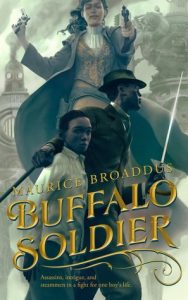 “Desert Justice” by Maurice Broaddus
“Desert Justice” by Maurice Broaddus
A black man with a righteous cause, the will to back it up and the grief not to care if he goes down in the fight takes up a magical badge to battle the evil spirit of the dead Confederacy that white men are using to vilify, subjugate and lynch blacks who stand up for themselves in the west after they fled the ‘legal slavery’ of the sharecropping system. If you enjoyed the author’s novella Buffalo Soldier you’ll love this one too. I certainly did. A
“In the End, the Beginning” by Laura Anne Gilman
A still heartbreaking but slightly more hopeful alternate magical version of the white man’s invasion of the west. It can’t be stopped, but powerful spirits CAN, if they are willing to sacrifice themselves and their magic in the cause, alter the means by which it happens, in the hopes that the ones who can’t be stopped are the best of their kind and not the worst. A
“Nightfall on the Iron Dragon Line” by James A. Moore
The inevitable train story because no western or weird version thereof would be complete without one train story. The concept is interesting, and a story about a lawman bringing in a dangerous criminal always works in westerns but this one needed to be longer for all the disparate elements – especially the worm and the Chinese engineers – to come together. C
“Simple Silas” by Scott Sigler
This is straight up horror and the story relies on the protagonist having an undefined intellectual disability (because they were back then) in a way that just makes the whole thing more uncomfortable than compelling. D
“Hell and Destruction are Never Full” by Marguerite Reed
A bounty hunter captures a man for more money than she’s ever seen in her life and doesn’t want to hear about the real reason the bounty was set – until she comes face to face with a vampire and his renfield who plan to shut up a witness and get a meal out of it at the same time. That this has a happy ending is a big surprise. It’s not the standout in the collection but it was pretty good all the same. B
“The Legend of Long-Ears” by Keith R.A. DeCandido
A meeting that never happened between two legends, Calamity Jane and Deputy U.S. Marshal Bass Reeves. Calamity is a seer who drinks to keep her visions of the future at bay, while she does her best to keep the chaos agent known as Long-Ears from taking more lives than he’s due. She saves Reeves but can’t save them all. However, she saves so many that Long-Ears himself travels the west telling any who will listen the tale of his greatest and most respected enemy. This one seems like the quintessential weird west story, or at least one branch of it, with legends meeting, native spirits interfering, respect between enemies and tragedies all around. A+
“The Night Caravan” by Jennifer Brody
A post-apocalyptic tale where the desert has returned, while technology and fallout have bred monsters and settlements are far apart while travel puts you in danger of being ridden by one of the monsters. The mix of high tech and low villainy with a mythical utopia that is probably a boondoggle makes the story interesting. B
“Dreadful” by John Hartness
A middle-aged widow and a tired vampire-hunting cowboy team up to wipe out a nest of vampires that is eating their way across the west like locusts. Separately, they’re victims, together they might just be enough to get the job done. And if there’s an after, they might have a chance at being happy in it, together. B+
“Thicker Than Water” by Carrie Harris
Families are terrible. His brothers are human monsters. Her sisters are sea monsters. But family is family and blood is thicker than water, even when the deck of the ship is awash in it. This one just wasn’t my cuppa, and I’m trying really hard not to think about what the tea in that cuppa would be made of. C
“Barnfeather’s Magical Medicine Show and Tent Extravaganza” by Jeffrey J. Mariotte
Another one a bit too high on the creep-o-meter for me, about a magical circus tent that steals children and eats them to keep itself and its avatar powered – or perhaps the other way around, pursued by a lawman hoping to rescue children who are already gone. C
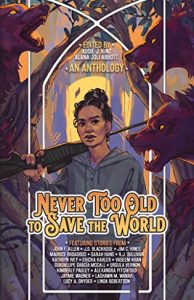 Escape Rating B: I had to do math to get to an overall rating, just as I did for the review of a previous collection by this publisher, Never Too Old to Save the World, which is going to end up on my Best Books list for this year because I’ve referred to it so often.
Escape Rating B: I had to do math to get to an overall rating, just as I did for the review of a previous collection by this publisher, Never Too Old to Save the World, which is going to end up on my Best Books list for this year because I’ve referred to it so often.
I enjoyed this collection, well, not quite as much as Never Too Old, but still quite a bit. Even the stories that went too far into horror for my personal tastes, or the couple that just didn’t work for me, still added to the overall feeling of ‘those thrilling days of yesteryear’ even if it was a weirder and more uncanny yesteryear than The Lone Ranger ever imagined.
Or perhaps especially because it was a whole lot weirder and considerably more uncanny. Just as marvelously as The Wild, Wild West so often was.

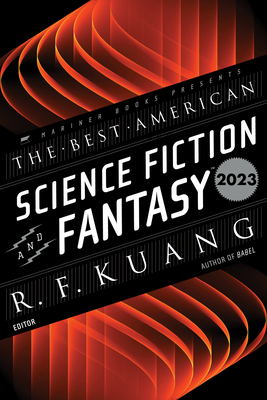 The Best American Science Fiction and Fantasy 2023 by
The Best American Science Fiction and Fantasy 2023 by 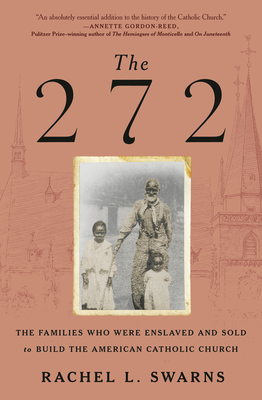 The 272: The Families Who Were Enslaved and Sold to Build the American Catholic Church by
The 272: The Families Who Were Enslaved and Sold to Build the American Catholic Church by 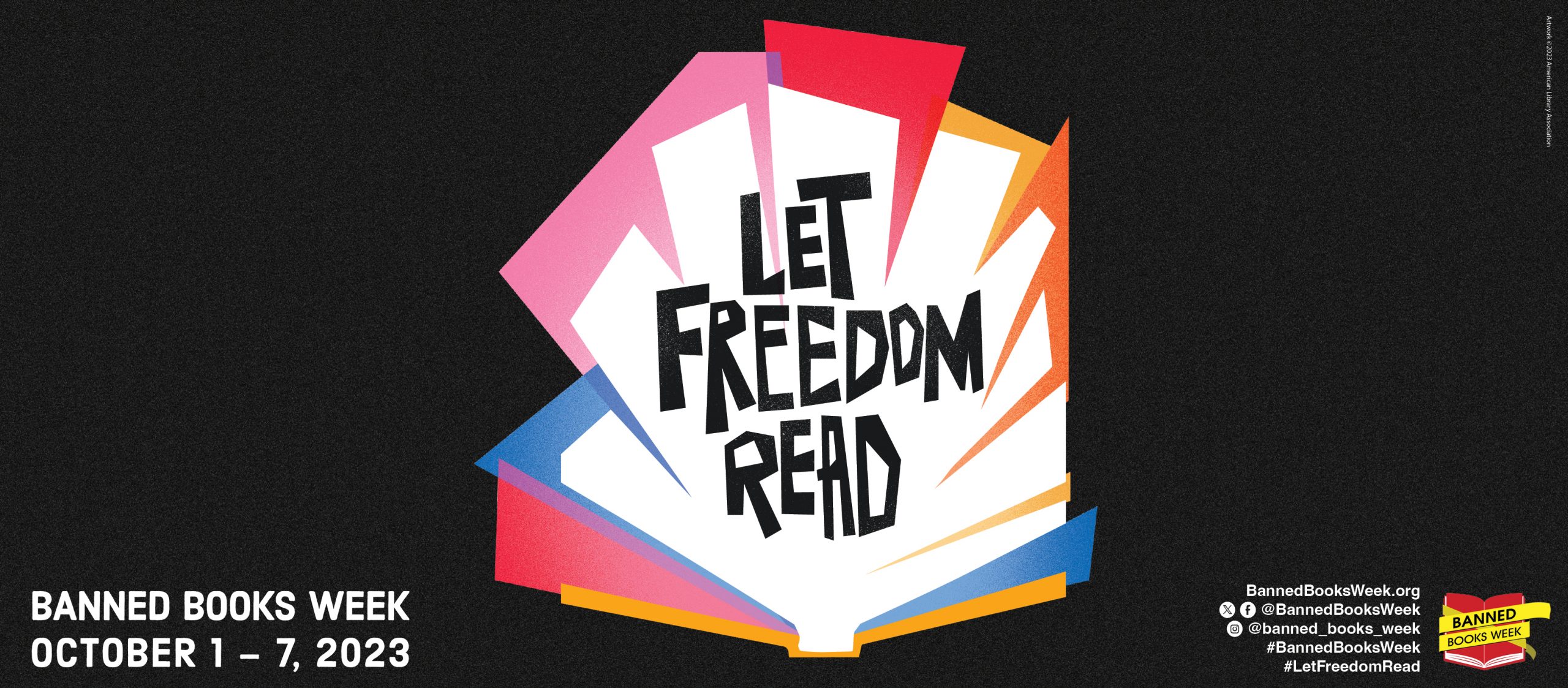
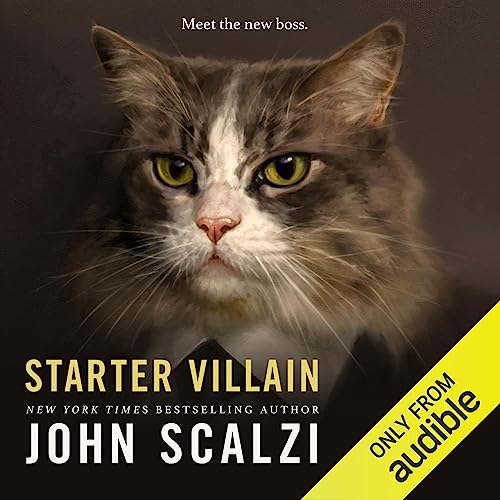 Starter Villain by
Starter Villain by 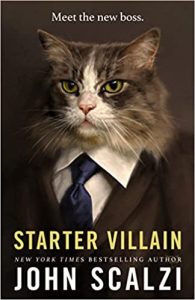 Escape Rating A: Charlie starts out Starter Villain in WAY, WAY over his head. Part of his charm is that he never loses sight of that fact. He’s always aware that he hasn’t got a clue, and isn’t likely to get one any time soon, and is secretly panicking about it every other minute. Which is a big chunk of why we like him and end up rooting for him so hard, because his inner voice is asking the same questions that a lot of us would be asking in his place.
Escape Rating A: Charlie starts out Starter Villain in WAY, WAY over his head. Part of his charm is that he never loses sight of that fact. He’s always aware that he hasn’t got a clue, and isn’t likely to get one any time soon, and is secretly panicking about it every other minute. Which is a big chunk of why we like him and end up rooting for him so hard, because his inner voice is asking the same questions that a lot of us would be asking in his place.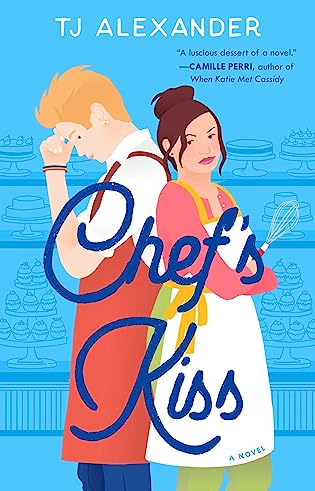 Chef's Kiss (Chef's Kiss, #1) by
Chef's Kiss (Chef's Kiss, #1) by 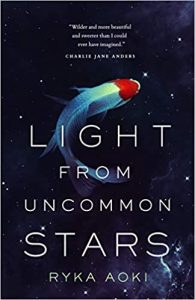 When I saw a queer romance, involving a chef, I was all-in. I love to cook (ask Marlene!) and I love queer romance almost as much as I love sci-fi. If there’s ever a queer romance set on a spaceship involving the ship’s cook, I may spontaneously combust. (Marlene’s comment: Ryka Aoki’s marvelous
When I saw a queer romance, involving a chef, I was all-in. I love to cook (ask Marlene!) and I love queer romance almost as much as I love sci-fi. If there’s ever a queer romance set on a spaceship involving the ship’s cook, I may spontaneously combust. (Marlene’s comment: Ryka Aoki’s marvelous  Cisgender and/or straight readers might not get that resonance, and for those readers who don’t, this is still a fantastically cute, sassy, well-crafted rom-com with a little steam and some great food for thoughtful reflection. If you’re one of those readers, that’s okay, though this reviewer’s hope is that seeing Ray and Simone’s struggles educate you a bit, and give you a better feeling for those people around you who may not fit in the same mold you do. For queer folk and their allies, though, there’s so much more to see and feel here. My one gripe about this book is that the ending came too quickly, the resolution a little bit deus ex machina for my tastes – the happy-for-now ending came quite abruptly, even though it was a good end to the tale. This was TJ Alexander’s first work, and I am going to read their second work, the follow-on
Cisgender and/or straight readers might not get that resonance, and for those readers who don’t, this is still a fantastically cute, sassy, well-crafted rom-com with a little steam and some great food for thoughtful reflection. If you’re one of those readers, that’s okay, though this reviewer’s hope is that seeing Ray and Simone’s struggles educate you a bit, and give you a better feeling for those people around you who may not fit in the same mold you do. For queer folk and their allies, though, there’s so much more to see and feel here. My one gripe about this book is that the ending came too quickly, the resolution a little bit deus ex machina for my tastes – the happy-for-now ending came quite abruptly, even though it was a good end to the tale. This was TJ Alexander’s first work, and I am going to read their second work, the follow-on  The Piano Tuner by
The Piano Tuner by 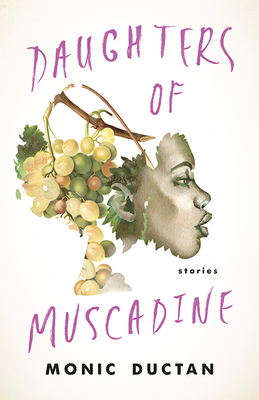 Daughters of Muscadine by Monic Ductan
Daughters of Muscadine by Monic Ductan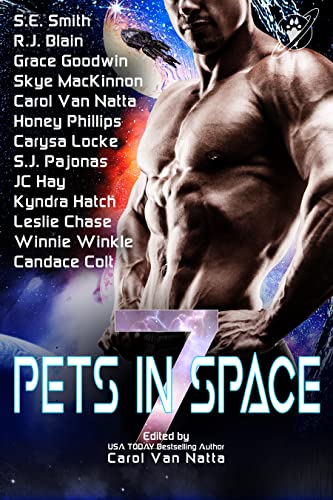 Pets in Space 7 by
Pets in Space 7 by  For me, the annual collection is a reading delight that will last through lots of reading time, especially over the winter with a cat in my lap and a cup of tea or hot cocoa at my side. It’s much too big for one sitting or even one weekend. I always want to take my time and enjoy every page.
For me, the annual collection is a reading delight that will last through lots of reading time, especially over the winter with a cat in my lap and a cup of tea or hot cocoa at my side. It’s much too big for one sitting or even one weekend. I always want to take my time and enjoy every page.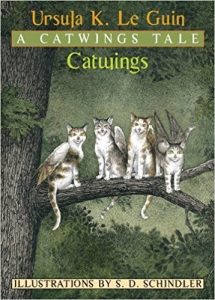 “Written in the Stars” revolves around a woman stranded on a failing space station with her vast collection of books, her flying cat, and her determination to save up enough money to get back to something a little bit more like civilization. Megan is plucky beyond belief, and lucky beyond reason, as she finds both someone to love and a purpose for living in helping to rescue the space station from itself. Her winged cat Nebula is both very cat and very reminiscent of some famous literary felines, as Nebula is an intergalactic traveling version of the winged cats in Nebula-Award winning Ursula LeGuin’s lovely
“Written in the Stars” revolves around a woman stranded on a failing space station with her vast collection of books, her flying cat, and her determination to save up enough money to get back to something a little bit more like civilization. Megan is plucky beyond belief, and lucky beyond reason, as she finds both someone to love and a purpose for living in helping to rescue the space station from itself. Her winged cat Nebula is both very cat and very reminiscent of some famous literary felines, as Nebula is an intergalactic traveling version of the winged cats in Nebula-Award winning Ursula LeGuin’s lovely 
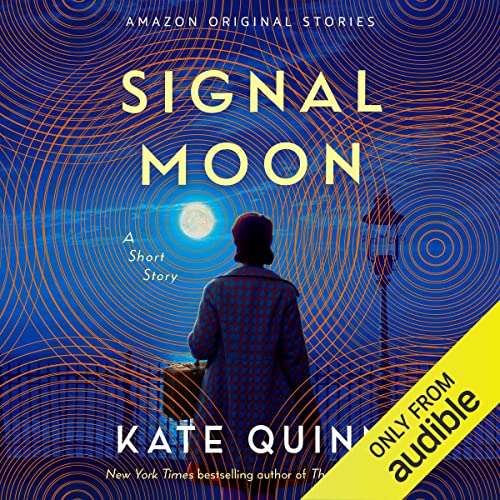 Signal Moon: A Short Story by
Signal Moon: A Short Story by 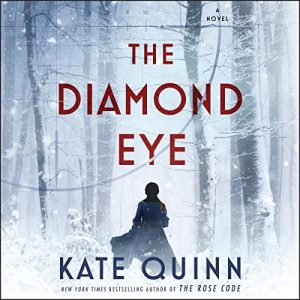 While Matt’s more frank and frequently profane dialog, along with the desperation of his own internal monologue, gives the reader or listener a clear portrait of who he is and what drove him to become the person – and the officer – that he is on the brink of what could be – briefly – his very own war.
While Matt’s more frank and frequently profane dialog, along with the desperation of his own internal monologue, gives the reader or listener a clear portrait of who he is and what drove him to become the person – and the officer – that he is on the brink of what could be – briefly – his very own war.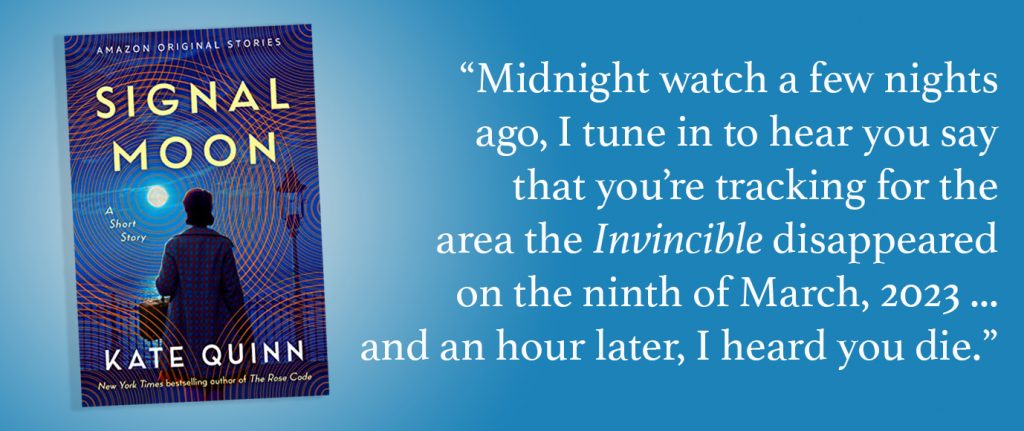
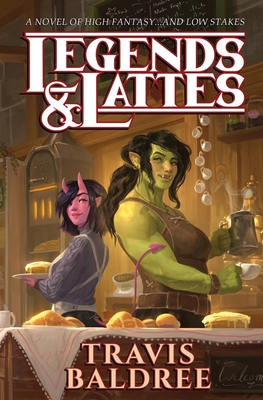 Legends & Lattes by
Legends & Lattes by 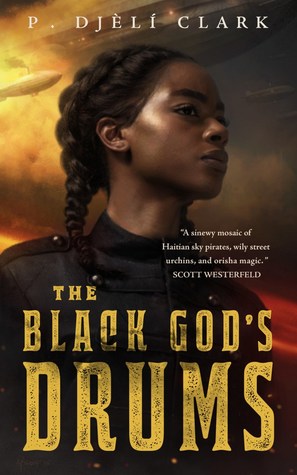 The Black God's Drums by
The Black God's Drums by 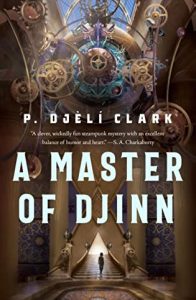 There is just something about New Orleans that makes it seem, not just possible but downright plausible, that there is magic on those streets and always has been. Whether the version of the city is the one we know from history, or some other New Orleans out there in the multiverse of parallel universes and alternate histories.
There is just something about New Orleans that makes it seem, not just possible but downright plausible, that there is magic on those streets and always has been. Whether the version of the city is the one we know from history, or some other New Orleans out there in the multiverse of parallel universes and alternate histories.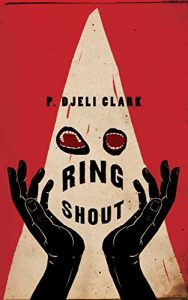 Right alongside the coming-of-age story of Creeper, a girl on the cusp of adulthood (Creeper’s OK with creeping up to adulthood, but she’s much less sanguine about approaching womanhood in any way, shape, or form) who wants more than anything to find a way out of the city she has lived in all of her life. She thinks her accidental discovery of a plot to drown the city in magically created storms can be traded for a berth on a smuggler’s airship.
Right alongside the coming-of-age story of Creeper, a girl on the cusp of adulthood (Creeper’s OK with creeping up to adulthood, but she’s much less sanguine about approaching womanhood in any way, shape, or form) who wants more than anything to find a way out of the city she has lived in all of her life. She thinks her accidental discovery of a plot to drown the city in magically created storms can be traded for a berth on a smuggler’s airship.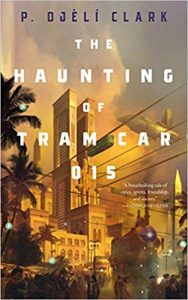 And on top of all that, we have not just the coming-of-age story, but a pulse-pounding adventure with deadly danger both in the immediate term and in the consequences if things go wrong. As they very nearly do. Along with the possibility of a daring rescue by pirate airship – or an ignominious crash of defeat.
And on top of all that, we have not just the coming-of-age story, but a pulse-pounding adventure with deadly danger both in the immediate term and in the consequences if things go wrong. As they very nearly do. Along with the possibility of a daring rescue by pirate airship – or an ignominious crash of defeat.